What’s the latest instalment in the cereal bar market? Mark Wingett catches up on the sector’s health and wealth .
Why is it that trends appear out of nowhere and some products just work? Ask any retail expert and they’ll often use four simple words to sum up the phenomenon: cash rich, time poor.
This little phrase is big enough to have spelt success for hundreds of new lines, and it’s all thanks to the modern consumer’s need for high-quality products and service with half the waiting time.
Our busy society no longer has time to sit down as a family and eat together - in fact, breakfast, lunch and dinner are true moveable feasts, with set meal occasions replaced by food that can be eaten on the move.
Out of all this, the cereal bar was born. As people gave up on eating a traditional breakfast the cereal bar stepped into the role as a replacement to be eaten on the way to work, school or the gym.
It’s a role so big that there are now 300 cereal bars battling for space in c-store outlets across the country.
According to AC Nielsen, the cereal bar market is now worth £239m in the UK - and it’s grown every year since Jordans launched the first bar of its kind 25 years ago.
This year that growth has slowed slightly, yet it has still increased by 11.8% year on year (AC Nielsen).
Jordans may have been in at the start but it is still developing its cereal bars. This year it moved further into the c-store market with the launch of a special muesli bar and special fruit muesli cereal bar.
According to the company, both are aimed at busy consumers who haven’t got time to sit down for breakfast, but who eat on the run.
However, there’s more to the market than that. Cereal bars, Jordans marketing controller Nicky Carlyle says, provide consumers with “a filling and wholesome snack and a healthy alternative”.
She adds: “There is a growing interest among consumers in healthy eating. Therefore, the demand for natural snacks is growing as people seek guilt-free indulgence. Stocking cereal bars can set an outlet apart from the rest by meeting consumer demand for naturally great tasting, wholesome food.”
Research by Mintel has revealed that the healthier biscuit market is worth £292.5m and is growing at 19.6% year on year. And a HIM report this year found that 47% of c-store shoppers wanted a healthier option for snacking.
United Biscuits UK (UBUK) impulse trading director Paul Graham believes this all means it’s a market that c-store retailers should be exploiting. “Although convenience isn’t associated with health, it’s important to stock a healthier option like Go ahead! bars as they offer consumers a point of difference in a growing sector.”
It’s no surprise, then, that cereal bars have started to take up more space in stores and make inroads into the traditional confectionery section. Graham continues: “Space as always in c-stores is key, but given the need for a healthier alternative retailers should look at creating a healthy category section. Cereal
bars can be positioned with other healthy products such as dried fruit and handy pack bagged snacks, therefore providing consumers with a wide range of products which are better for you.”
ANY TIME, ANY PLACE
Jill Daccos is the store supervisor and buyer at David’s store in Mablethorpe, Lincolnshire. She agrees that the sale of cereal bars is no longer confined to the breakfast brigade.
She says: “Cereal bars do a good business all day round because consumers see them as a snack they can have at any time. Although men and kids buy them, they are most popular with women aged between 20 and 35. They definitely see them as a healthier option than a chocolate bar, and a few have told me they are good for eating before trips to the gym.”
Popular lines, according to Jill, include Kellogg’s Special K bar and Go ahead! fruit & nut bar. “For the non-health conscious consumers chocolate chip
cereal bars are popular. Because consumers treat these and the other bars as snacks, it’s important to position the bars like other impulse lines,” comments Jill.
“In our store, they are located on a gondola end near the till, which seems to work.” Wendy Lanigan runs Lanigans Store in Aintree, Merseyside, a shop that’s near three schools. She says that the schoolkids are also taking notice of the healthier option of cereal bars.
“It’s a section that has definitely grown over the past couple of years because it has become very popular with the schoolkids,” comments Wendy. “I wouldn’t say it has replaced breakfast for them but a lot of them buy the bars to put in their lunchboxes rather than a chocolate bar. Those that are based on breakfast cereal brands are must-haves for us because the kids seem to identify more with them.”
For Jas Singh, who runs the Nisa Metro store in Leeds city centre, the early morning trade interested in his cereal bar lines isn’t kids but busy office workers.
He says: “I guess they don’t have time most days for breakfast so they come in here for a piece of fruit, a drink and a snack bar to keep them going until lunch. It’s mostly the healthier bars like Go ahead! or Nutragrain that sell best, so I tend to make more space for them.”
Whether they are young or old, male or female, schoolkids or office workers, it looks very likely that the “breakfast replacement market” as Jordan’s Carlyle describes it will continue to increase in importance for c-store retailers.
She concludes: “Today’s society is getting busier and consumers find that they simply have no time to refuel during the day, let alone spare time for breakfast. Cereal bars are in a perfect position to step into the hole that is created by this. C-store retailers must make sure that they have the right mix of bars and also place them in a perfect position in-store to make the most of this demand.”
Why is it that trends appear out of nowhere and some products just work? Ask any retail expert and they’ll often use four simple words to sum up the phenomenon: cash rich, time poor.
This little phrase is big enough to have spelt success for hundreds of new lines, and it’s all thanks to the modern consumer’s need for high-quality products and service with half the waiting time.
Our busy society no longer has time to sit down as a family and eat together - in fact, breakfast, lunch and dinner are true moveable feasts, with set meal occasions replaced by food that can be eaten on the move.
Out of all this, the cereal bar was born. As people gave up on eating a traditional breakfast the cereal bar stepped into the role as a replacement to be eaten on the way to work, school or the gym.
It’s a role so big that there are now 300 cereal bars battling for space in c-store outlets across the country.
According to AC Nielsen, the cereal bar market is now worth £239m in the UK - and it’s grown every year since Jordans launched the first bar of its kind 25 years ago.
This year that growth has slowed slightly, yet it has still increased by 11.8% year on year (AC Nielsen).
Jordans may have been in at the start but it is still developing its cereal bars. This year it moved further into the c-store market with the launch of a special muesli bar and special fruit muesli cereal bar.
According to the company, both are aimed at busy consumers who haven’t got time to sit down for breakfast, but who eat on the run.
However, there’s more to the market than that. Cereal bars, Jordans marketing controller Nicky Carlyle says, provide consumers with “a filling and wholesome snack and a healthy alternative”.
She adds: “There is a growing interest among consumers in healthy eating. Therefore, the demand for natural snacks is growing as people seek guilt-free indulgence. Stocking cereal bars can set an outlet apart from the rest by meeting consumer demand for naturally great tasting, wholesome food.”
Research by Mintel has revealed that the healthier biscuit market is worth £292.5m and is growing at 19.6% year on year. And a HIM report this year found that 47% of c-store shoppers wanted a healthier option for snacking.
United Biscuits UK (UBUK) impulse trading director Paul Graham believes this all means it’s a market that c-store retailers should be exploiting. “Although convenience isn’t associated with health, it’s important to stock a healthier option like Go ahead! bars as they offer consumers a point of difference in a growing sector.”
It’s no surprise, then, that cereal bars have started to take up more space in stores and make inroads into the traditional confectionery section. Graham continues: “Space as always in c-stores is key, but given the need for a healthier alternative retailers should look at creating a healthy category section. Cereal
bars can be positioned with other healthy products such as dried fruit and handy pack bagged snacks, therefore providing consumers with a wide range of products which are better for you.”
ANY TIME, ANY PLACE
Jill Daccos is the store supervisor and buyer at David’s store in Mablethorpe, Lincolnshire. She agrees that the sale of cereal bars is no longer confined to the breakfast brigade.
She says: “Cereal bars do a good business all day round because consumers see them as a snack they can have at any time. Although men and kids buy them, they are most popular with women aged between 20 and 35. They definitely see them as a healthier option than a chocolate bar, and a few have told me they are good for eating before trips to the gym.”
Popular lines, according to Jill, include Kellogg’s Special K bar and Go ahead! fruit & nut bar. “For the non-health conscious consumers chocolate chip
cereal bars are popular. Because consumers treat these and the other bars as snacks, it’s important to position the bars like other impulse lines,” comments Jill.
“In our store, they are located on a gondola end near the till, which seems to work.” Wendy Lanigan runs Lanigans Store in Aintree, Merseyside, a shop that’s near three schools. She says that the schoolkids are also taking notice of the healthier option of cereal bars.
“It’s a section that has definitely grown over the past couple of years because it has become very popular with the schoolkids,” comments Wendy. “I wouldn’t say it has replaced breakfast for them but a lot of them buy the bars to put in their lunchboxes rather than a chocolate bar. Those that are based on breakfast cereal brands are must-haves for us because the kids seem to identify more with them.”
For Jas Singh, who runs the Nisa Metro store in Leeds city centre, the early morning trade interested in his cereal bar lines isn’t kids but busy office workers.
He says: “I guess they don’t have time most days for breakfast so they come in here for a piece of fruit, a drink and a snack bar to keep them going until lunch. It’s mostly the healthier bars like Go ahead! or Nutragrain that sell best, so I tend to make more space for them.”
Whether they are young or old, male or female, schoolkids or office workers, it looks very likely that the “breakfast replacement market” as Jordan’s Carlyle describes it will continue to increase in importance for c-store retailers.
She concludes: “Today’s society is getting busier and consumers find that they simply have no time to refuel during the day, let alone spare time for breakfast. Cereal bars are in a perfect position to step into the hole that is created by this. C-store retailers must make sure that they have the right mix of bars and also place them in a perfect position in-store to make the most of this demand.”




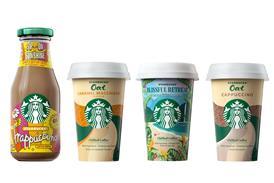

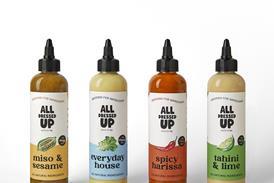














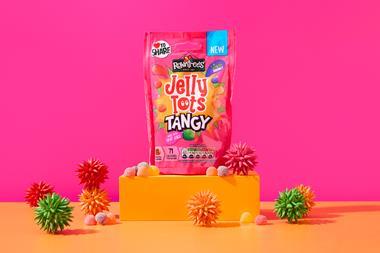
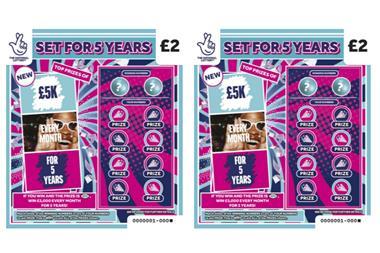


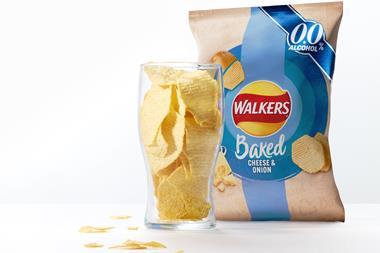
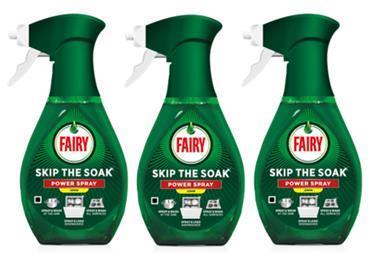
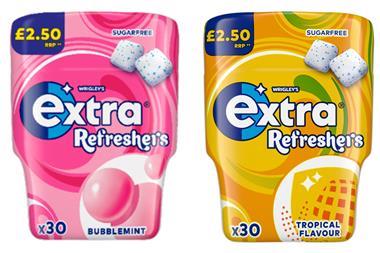
No comments yet